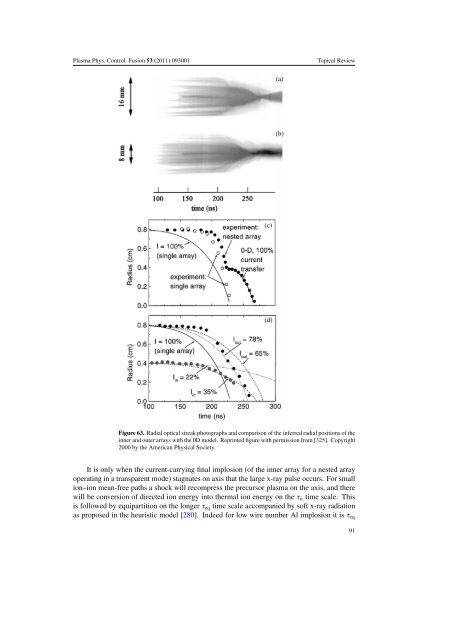Create successful ePaper yourself
Turn your PDF publications into a flip-book with our unique Google optimized e-Paper software.
Plasma Phys. Control. Fusion 53 (2011) 093001<br />
Topical Review<br />
Figure 63. Radial optical streak photographs and comparison <strong>of</strong> <strong>the</strong> inferred radial positions <strong>of</strong> <strong>the</strong><br />
inner and outer arrays with <strong>the</strong> 0D model. Reprinted figure with permission from [325]. Copyright<br />
2000 by <strong>the</strong> American Physical Society.<br />
It is only when <strong>the</strong> current-carrying final implosion (<strong>of</strong> <strong>the</strong> inner array for a nested array<br />
operating in a transparent mode) stagnates on axis that <strong>the</strong> large x-ray pulse occurs. For small<br />
ion–ion mean-free paths a shock will recompress <strong>the</strong> precursor plasma on <strong>the</strong> axis, and <strong>the</strong>re<br />
will be conversion <strong>of</strong> directed ion energy into <strong>the</strong>rmal ion energy on <strong>the</strong> τ ii time scale. This<br />
is followed by equipartition on <strong>the</strong> longer τ eq time scale accompanied by s<strong>of</strong>t x-ray radiation<br />
as proposed in <strong>the</strong> heuristic model [280]. Indeed for low wire number Al implosion it is τ eq<br />
91














